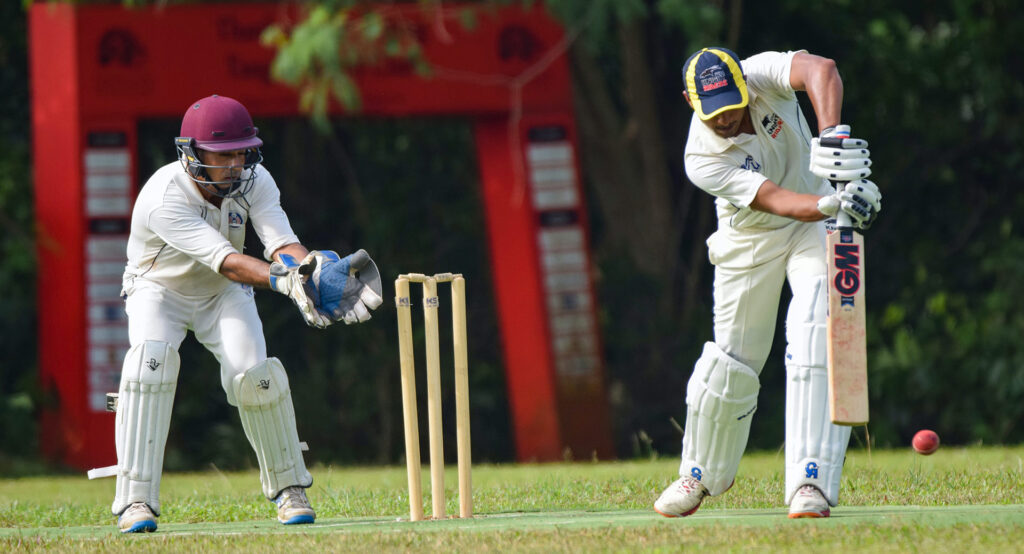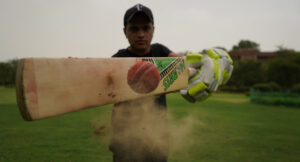16 Fascinating Facts About Cricket
Cricket is a popular sport that originated in England in the 16th century and is now played in many countries around the world. Here are some interesting facts about the game of cricket:

Cricket is a bat-and-ball game that originated in England in the 16th century.
1 The game is believed to have evolved from earlier bat-and-ball games played in England, such as stoolball and rounders.
Over time, the rules and equipment of cricket were standardized, and the first recorded cricket match took place in 1646 in Kent, England. The popularity of cricket grew throughout the 18th and 19th centuries, and the sport was introduced to other countries through the British Empire.
Today, cricket is played in many countries around the world, particularly in England, Australia, India, Pakistan, South Africa, the West Indies, and New Zealand. The sport has a large following and is considered one of the most popular sports in the world.
The first recorded cricket match took place in 1646 in Kent, England.
2 The match was between teams from the villages of East Sussex and West Sussex, and was played at a place called Coxheath, near Maidstone.
The match was played under what were known as “common rules,” which allowed for some variations in the way the game was played. The rules of cricket were not fully standardized until the 18th century, when the Laws of Cricket were established by the Marylebone Cricket Club (MCC) in London.
Today, the Laws of Cricket are maintained by the MCC, and are recognized as the official rules of the sport. The Laws cover all aspects of the game, including the dimensions of the pitch, the equipment used by players, and the rules of play.
Cricket is played on a circular or oval-shaped field with a 22-yard-long rectangular strip in the center known as the pitch.
3 The field is typically made of grass and is usually circular or oval in shape.
The pitch is located in the centre of the field and is a rectangular area that measures 22 yards in length and 10 feet in width. The pitch is made of flat, closely mown grass, and is marked with lines at either end known as creases. These creases are used to determine where the bowler must start their run-up, and where the batsmen must stand.
The pitch is the most important part of the field, as it is where most of the action in a cricket match takes place. The bowler delivers the ball from one end of the pitch, while the batsman tries to hit the ball with their bat and score runs. The fielding team tries to stop the batsman from scoring runs and take wickets, which is when a batsman is dismissed from the game.
Each team in cricket has 11 players.
4 The players are divided into two groups: the batting team and the fielding team.
The batting team has two batsmen on the pitch at a time, and they try to score runs by hitting the ball and running back and forth between the two ends of the pitch. The fielding team has all 11 players on the field at once, and they try to prevent the batting team from scoring runs and taking wickets.
In addition to the 11 players on the field, each team also has several substitute players on the side lines who can come in if needed due to injury or other circumstances. Cricket is a team sport, and teamwork and coordination are key to success in the game.
The object of the game is for one team to score more runs than the other team.
5 Each team takes turns batting and fielding, with the aim of scoring more runs than their opponents.
When the batting team is on the field, their objective is to score as many runs as possible while losing as few wickets as possible. A run is scored when the batsman hits the ball and then runs to the other end of the pitch, while their partner runs to the opposite end. If the ball goes over the boundary without touching the ground, the batting team is awarded 4 runs, and if the ball goes over the boundary without touching the ground after bouncing, the batting team is awarded 6 runs.
When the fielding team is on the field, their objective is to prevent the batting team from scoring runs, take wickets, and restrict the scoring rate of the batting team. A wicket is taken when the fielding team successfully dismisses a batsman by getting them out in one of several ways, such as catching the ball hit by the batsman or hitting the wicket with the ball.
At the end of the match, the team with the most runs is declared the winner.
A run is scored when the batsman hits the ball and runs to the opposite end of the pitch.
6 While their batting partner runs to the opposite end of the pitch as well. The two batsmen can continue to run back and forth between the opposite ends of the pitch, scoring one run for each completed run.
If the batsman hits the ball so well that it goes over the boundary rope without touching the ground, the batting team is awarded 4 runs, and if the ball goes over the boundary rope after bouncing once, the batting team is awarded 6 runs.
However, if a fielder catches the ball before it touches the ground or hits the wicket with the ball while the batsman is out of their crease, the batsman is out and no runs are scored.
A match can last anywhere from several hours to several days, depending on the format.
7 There are three main formats of cricket:
Test cricket: This is the longest format of the game, with matches lasting up to five days. Each team gets to bat twice, and the team that scores the most runs over the course of the match wins.
One Day International (ODI) cricket: In this format, each team gets to bat and bowl for a maximum of 50 overs each (an over consists of six deliveries), and the team with the highest total score at the end of their innings wins.
Twenty20 (T20) cricket: This is the shortest format of the game, with matches lasting around three hours. Each team gets to bat and bowl for a maximum of 20 overs each, and the team with the highest total score at the end of their innings wins.
So, depending on the format, a cricket match can last anywhere from several hours to several days.
Brian Lara of the West Indies holds the record for the highest individual score in Test cricket.
8 With an unbeaten innings of 400 runs against England in 2004. Lara broke the previous record of 380 runs held by Matthew Hayden of Australia.
This record-breaking innings by Lara is considered to be one of the greatest individual performances in the history of cricket. It took him just over 13 hours to score the 400 runs, during which he hit 43 fours and 4 sixes.
The record still stands today, and it is considered to be a remarkable achievement in the game of cricket.
Rohit Sharma of India holds the record for the highest individual score in One Day International (ODI) cricket, with an unbeaten innings of 264 runs against Sri Lanka in 2014.
9 Rohit Sharma’s innings included 33 fours and 9 sixes and came off just 173 balls. It was a remarkable performance that helped India post a total of 404 runs in their 50 overs. Rohit Sharma’s record-breaking innings surpassed the previous highest individual score in ODI cricket, which was 219 runs scored by Virender Sehwag of India in 2011.
Rohit Sharma is considered to be one of the best ODI batsmen in the world and his innings of 264 runs is widely regarded as one of the greatest individual performances in the history of cricket.
The record for the highest team score in Test cricket is actually held by England, who scored 903/7 declared against Australia in 1938 at The Oval.
10 However, the highest team score in Test cricket in the modern era was scored by Sri Lanka, who declared at 952/6 against India in 1997 in Colombo.
Sri Lanka’s innings in that match featured a record-breaking partnership of 576 runs for the second wicket between Sanath Jayasuriya and Roshan Mahanama. This partnership is still the highest partnership for any wicket in Test cricket history.
The highest team score in ODI cricket is 481/6.
11 Scored by England against Australia in 2018 at Trent Bridge, Nottingham. This innings included a record-breaking opening partnership of 159 runs between Jason Roy and Jonny Bairstow.
The fastest century in ODI cricket was scored by AB de Villiers of South Africa in just 31 balls during an innings against the West Indies in 2015.
12 This was a remarkable innings that included 16 sixes and nine fours, and helped South Africa reach a total of 439/2 in their 50 overs.
The ICC Cricket World Cup is a quadrennial international cricket championship tournament and is one of the most prestigious events in the sport of cricket.
13 It is contested by the men’s national teams of the International Cricket Council (ICC) member countries.
The first Cricket World Cup was held in 1975, and it has been held every four years since then, with the exception of 1992, when it was held in Australia and New Zealand. The current champions are England, who won the tournament in 2019.
The most successful team in the history of Test cricket is Australia, with 389 test match victories.
14 Followed by England with 375 victories and India with 280 victories.
Australia has also won the most number of Test series, with 47 series victories, followed by England with 36 and the West Indies with 20.
Additionally, Australia has won the prestigious Ashes series against England on 33 occasions.
There are several cricket players who are widely regarded as some of the best to have played the sport.
15 Here are a few examples:
- Sir Don Bradman – Widely considered the greatest batsman in cricket history, the Australian legend scored an incredible batting average of 99.94 in Test cricket.
- Sachin Tendulkar – The Indian batsman is widely regarded as one of the greatest of all time, with the most runs (15,921) and most centuries (51) in Test cricket.
- Sir Vivian Richards – The West Indian batsman was known for his aggressive and fearless style of play, and is regarded as one of the best batsmen of his era.
- Sir Richard Hadlee – The New Zealand all-rounder is widely considered one of the greatest bowlers in cricket history, with 431 Test wickets to his name.
- Shane Warne – The Australian leg-spinner is regarded as one of the best spin bowlers in cricket history, with 708 Test wickets.
- Jacques Kallis – The South African all-rounder was a dominant force in both batting and bowling, and is regarded as one of the greatest all-rounders in cricket history.
- Kumar Sangakkara – The Sri Lankan batsman was known for his elegant style of play, and is regarded as one of the best batsmen of his generation, with over 12,000 runs in Test cricket.
These are just a few examples, and there are many other great cricket players who have left a lasting impact on the sport.
Cricket balls are typically made from a cork core that is tightly wrapped in twine, and then covered in leather.
16 The leather is cut into four panels and then stitched together to create the ball’s characteristic seam. The ball is usually dyed red for Test cricket, while white balls are used for limited-overs matches.
The cork core and twine give the ball its weight, while the leather covering provides the ball’s durability and grip for the bowler.
The exact specifications of the ball, including weight and circumference, are regulated by the International Cricket Council.





I went over this web site and I conceive you have a lot of superb info, saved to fav (:.